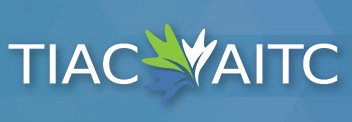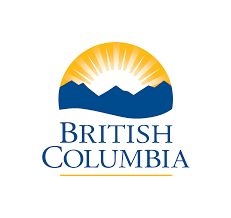
The Voice of Canada News
The federal budget was released by Minister of Finance, the Honourable Bill Morneau. This budget is the last presented by the incumbent government before the next federal election. The budget includes several measures that support the Tourism Industry Association of Canada (TIAC’s) strategic pillars and advocacy priorities.
TIAC has prepared this summary document to assist members in understanding the measures put forward by the government in Budget 2019 and how they relate to the tourism economy. TIAC outlined its priorities to the government in their Pre-Budget submission in August, and throughout the year in numerous forums and meetings with government decision-makers.
Here is a snapshot of budget measures that relate to our industry:
- Recognizing Tourism as an Economic Engine
- Industry Development
- Helping travellers visit Canada
- Labour and Skills Development
- Marketing
- Border and Airport Security
- Other measures
Please see below for more details on each of the above categories.
Overall, the 2019 federal budget is positive for tourism and puts forward a number of initiatives that should assist in meeting our goals – specifically showcasing Canada; addressing access barriers; and finding industry labor solutions. Moving into election season, we hope to see these commitments continue to be brought forward by all political parties. Tourism’s presence in this budget should also signal to all political parties that policies that support the tourism sector are of vital importance to the economy, and should be included in all party platforms.
TIAC would like to thank government stakeholders, notably the Honourable Melanie Joly, Minister of Tourism, Official Languages and La Francophonie, for their continued support and dedication to Tourism in Canada.
RECOGNIZING TOURISM AS AN ECONOMIC ENGINE Tourism becomes Canada’s seventh “Economic Strategy Table” as a result of Budget 2019. This is a very positive development for the tourism industry, as it prioritizes and recognizes the sector’s potential to lead economic growth for the country alongside other leading industry sectors. For more information on Canada’s Economic Strategy Table, please go to https://www.ic.gc.ca/eic/site/098.nsf/eng/home.
As a result, government and industry will connect to create innovative and ambitious growth targets, and address barriers. This aligns with TIAC’s longstanding call for a whole-of-government approach for one of Canada’s leading economic pillars.
INDUSTRY DEVELOPMENT The Budget also proposes $58.2 million over two years for regional development agencies to develop new tourism experiences. This funding which will fall under the banner of “the Canadian Experience Fund” will be used to grow five priority segments:
1. Indigenous tourism 2. Rural and remote tourism 3. Winter tourism 4. Inclusiveness (primarily LGBTQ2+) 5. Culinary tourism
This funding envelope will be exclusively dedicated for use by the tourism industry and will increase access to funding in regional development offices.
HELPING TRAVELLERS VISIT CANADA TIAC has long called for additional funding to support access for international visitors who come to Canada. Budget 2019 proposes an investment of $78.6 million over two years for Immigration, Refugees and Citizenship Canada (IRCC), to facilitate the efficient entry of visitors, beginning in 2019–20. This investment will ensure that resources are in place to process global demand for Canadian visitor visas, work and study permits. A further $42.9 million over two years will also be invested in IRCC call centres to better serve enquiries from visitors, new Canadians, and others.
LABOUR AND SKILLS DEVELOPMENT A broad focus of this budget was on ensuring Canadians have the skills and opportunities to succeed in the Canadian job market. This includes programs that may include funding for tourism sector job training. TIAC is pleased that many of these initiatives will support our continued requests for access to labor and skill development in the tourism and hospitality sectors. Specific measures proposed in the budget include:
Student Work Placement Program This program will expand and receive $631.2M over five years for work-integrated learning for students in fields outside Science, Technology, Engineering and Math (STEM) industries to support up to 20,000 new work placements. Additionally, Employment and Social Development Canada (ESDC) will receive $150M over four years to increase innovative partnerships and create up to 20,000 additional job placements.
Canada Training Benefit – ($710M over 5 years) will help with the cost of training fees and provide an EI training support benefit (four weeks of income support every 4 years at 55% of earnings) to allow people to take time off work to pursue training without risking job security.
- An EI Small Business Premium Rebate will pay employer EI premiums equal to or less than $20,000 per year who qualify for a rebate to offset the upward pressure on EI premiums resulting from the introduction of the new EI Training Support Benefit
- Guaranteed Income Supplement (GIS) will be enhanced for low-income seniors to allow them to earn more money while they work.
TIAC will continue to keep members informed of how we can use these measures to help close the labour gap facing sector businesses across the country.
MARKETINGTIAC has been a long-time advocate for increased marketing funding and promotion of Canadian tourism. TIAC is pleased to see Destination Canada’s core funding remain at $95.5 million annually on a permanent basis. Budget 2019 also proposed that $5M be allocated to domestic tourism marketing through Destination Canada in the next year to “help Canadians discover lesser-known areas, hidden national gems and new experiences across the country.”
BORDER AND AIRPORT SECURITY Budget 2019 will see the Canadian Air Transport Security Authority (CATSA) begin a transition from a government agency, to an independent, not-for-profit entity. The government is also increasing oversight of the Canadian Border Services Agency (CBSA) and will invest $24.42 million over five years to expand the mandate of the Civilian Review and Complaints Commission for the RCMP.
These budget measures tie directly to TIACs pre-budget recommendations for making travel safer and more efficient for travellers.
Canada Border Services Agency will also receive up to $31 million over the next five years, starting in 2019–20, with up to $5.8 million per year ongoing, to increase the number of detector dogs deployed across the country.
OTHER MEASURESBudget 2019 included several other project and policy announcements that have positive implications for the tourism economy. These include:
- Investments of $19 million over five years to Parks Canada to update park infrastructure for better visitor enjoyment of national parks and historic sites, and the development of a new national park in the Northwest Territories;
- Tourism & culture, as well as regional and local airports will be listed as categories that are eligible for ‘Municipal top-up funds’ to improve and support infrastructure in local communities;
- The extension of funding for the Canada Ferry Services contribution program to 2022 and procurement of 2 new ferries operating between Prince Edward Island and Nova Scotia, and Prince Edward Island and Quebec;
- Universal Broadband Access will provide rural and remote communities across the country with high-speed internet. This investment of $1.7B over 13 years will help rural, remote and indigenous tourism businesses develop market readiness;
- $16 million over two years, starting in 2019, to the Canada Arts Presentation Fund. This Fund supports not-for-profit professional performing arts organizations—including festivals and performing arts series—in all regions of the country;
- Major festivals will be supported by $24 million over two years, starting in 2019, to the Building Communities Through Arts and Heritage Program and the Celebration and Commemoration Program;
- Funding will be provided to Global Affairs Canada for Canada’s participation in World Expo 2020, to be hosted in Dubai. This will be an opportunity to showcase Canada as a destination for trade, investment, tourism and culture, to a large international audience.
- Expanding the rental housing finance initiative – additional $10 billion over nine years in financing through the Rental Construction Financing Initiative, extending the program until 2027–28. With this increase, the program would support 42,500 new units across Canada, particularly in areas of low rental supply.
CONCLUSIONTIAC is happy to report that this budget includes measures that tie into every part of strategic imperatives:
Marketing
- $5 million to Destination Canada for domestic marketing, and;
- Maintaining core funding at $95.5 million
Access
- CATSA will start to become an independent agency from the government;
- $78.6 million over two years for IRCC, so the agency is equipped to facilitate the efficient entry of visitors;
- $42.9 million over two years for IRCC call centres to better respond to visitor inquiries
Product
- $58.2 million over two years for regional development agencies to develop new tourism experiences through the Canadian Experiences Fund;
- Two extensive funds to support arts and festivals
People
- Significant investments in skill development programs for non-STEM sectors;
- Programs that promote ongoing training support
- GIS supplements to support working seniors
Whole of government approach
- The creation of a seventh Economic Strategy Table dedicated to tourism signals that the government is taking the sector seriously as a driver of economic growth in Canada.
TIAC will be working with our government stakeholders in the coming days and weeks to provide our members with additional information and details on how they can access these new programs and initiatives.



